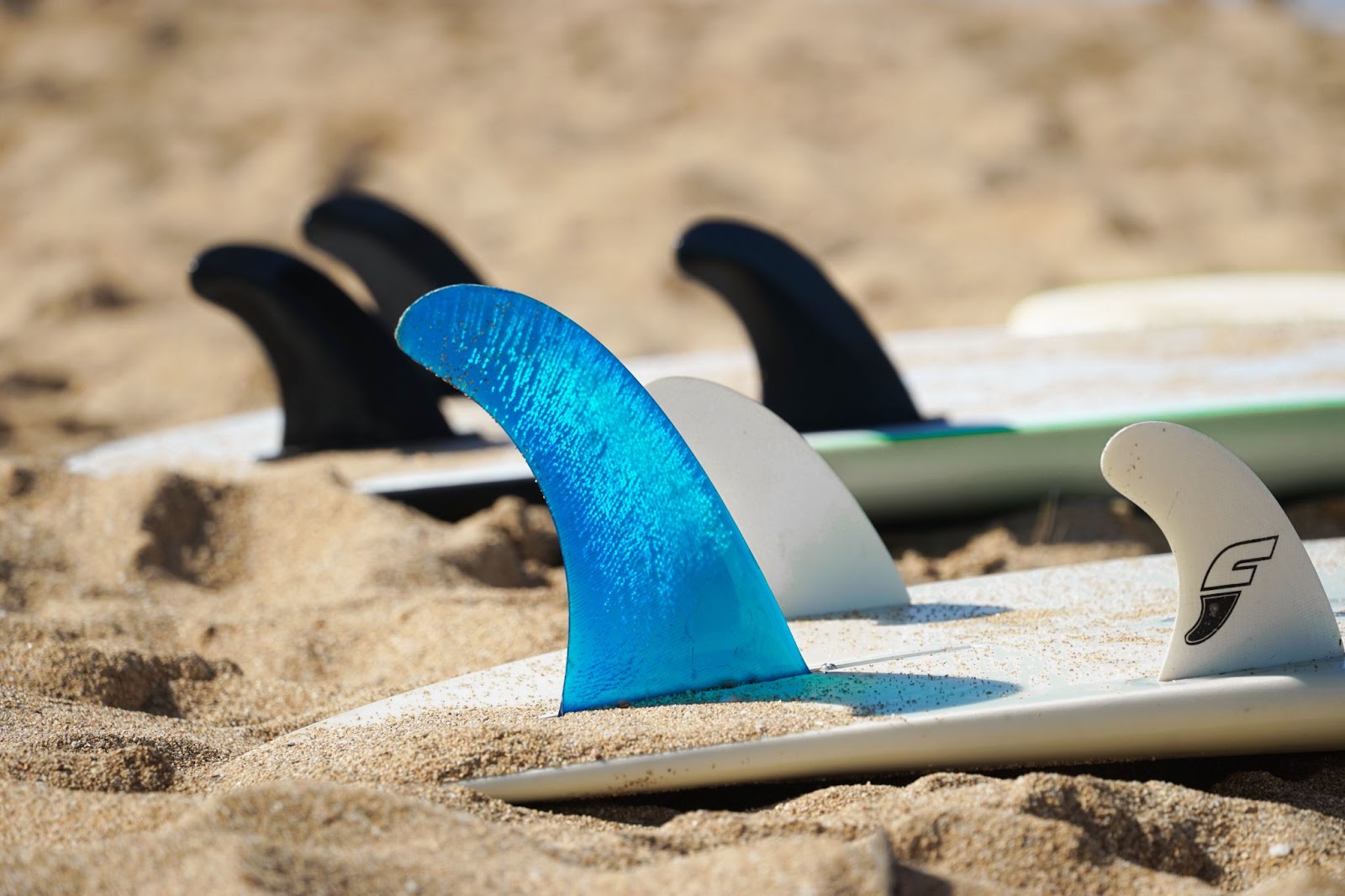Surfboard fins, also known as surf fins, play a crucial role in determining the performance, stability, and maneuverability of a surfboard. There are several types of surf fins available, each with its unique design and intended use. Here are some common types of surf fins:
Number
- Single Fin: The single fin setup is one of the earliest and simplest configurations. It involves using a single large fin in the center of the surfboard. This setup is often found in longboards and some retro-style boards. It offers stability and smooth turns, making it ideal for cruising and classic surfing.
- Twin Fin: The twin fin setup uses two smaller fins typically positioned near the rails on the surfboard’s bottom. This setup became popular during the ’70s and is known for its maneuverability and speed generation. Twin fins are great for carving and creating a loose feel on the wave.
- Thruster (Tri-Fin): The thruster setup is the most common and widely used configuration in modern surfing. It consists of three fins: a larger central fin and two smaller side fins. The central fin is usually larger and provides stability while the side fins aid in maneuverability and control. Thrusters are versatile and perform well in various wave conditions.
- Quad Fin: The quad fin setup utilizes four smaller fins, typically without a center fin. The four fins provide extra speed and responsiveness, making this setup excellent for generating speed down the line and making quick turns. Quad setups are popular for surfing powerful and hollow waves.
- 5-Fin (Quad + Center Fin): The 5-fin setup, also known as a “Quad + 1” setup, allows surfers to use their board as either a quad or a thruster. It includes four side fins like a quad, and it also comes with a center fin that can be used in conjunction with the side fins to create a thruster configuration. This setup offers versatility and adaptability to different wave conditions.
Kinds
- Bonzer: The Bonzer fin system incorporates a unique design with a central stabilizer fin and two or more smaller, curved fins positioned ahead of the center fin. This setup is intended to enhance control and maneuverability, especially on bigger waves and in critical sections of the wave. Check out this website to learn more about the mechanics.
- Twinzer: The twinzer combines the twin fin and thruster setups. It includes two smaller forward fins (similar to a twin fin) and two larger rear fins (similar to a thruster). The design aims to blend the speed of a twin fin with the control of a thruster.
- Nubster (Trailer): The nubster is a small, additional center fin that can be added to a thruster setup. It enhances stability and can provide more hold and control when needed, especially in larger or more powerful surf.
- Flexible Fins: Some fins are designed with flexible materials that can provide a different feel compared to traditional rigid fins. These flexible fins can offer increased maneuverability and adaptability to changing wave conditions.
Each type of surf fin offers a different surfing experience, and surfers often experiment with different setups to find the one that best suits their style and the specific conditions they encounter. For more information about surfing, check out our homepage! sandiegosurfingschool.com/







